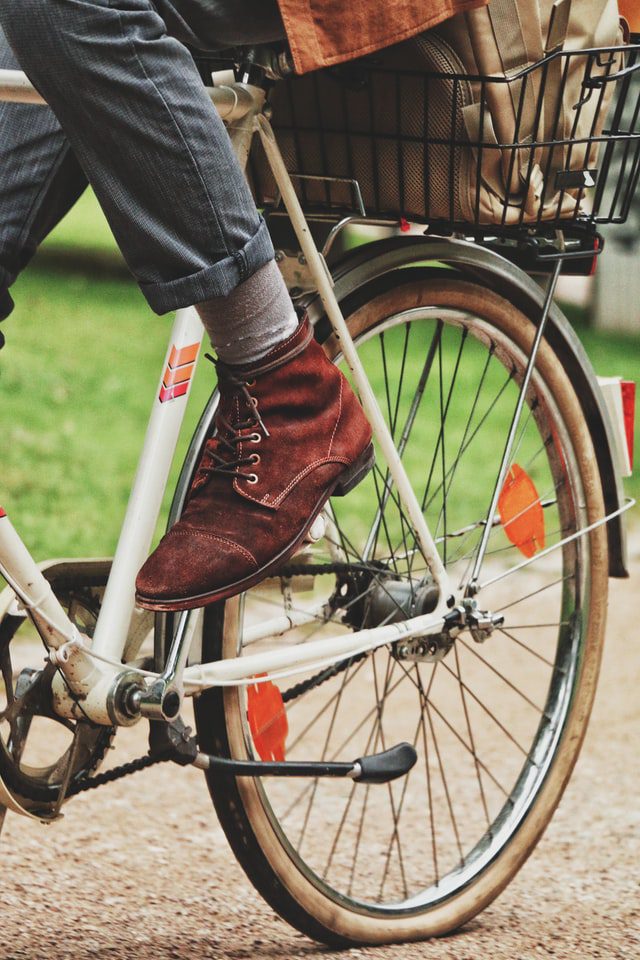One of the challenges that cyclists face when they set off to tackle their usual commute to work or local trail, is mud and puddles, especially during the wet spring months. As the rain waters the soil and prepares it for its spring renaissance, it lays a muddy tapestry upon the beloved cycling routes.
While this creates tricky travel conditions and a mess for commuters on their bikes, it can also bring about a thrill for adventure bikers. Nevertheless, those on their bikes need to be prepared for the UK’s wet weather, so that they can protect their bikes, their clothing and avoid winding up with mud splatters everywhere!
Together with Ben Mercer from the electric bike division at Leisure Lakes Bikes, we explore which is the wettest region in the UK and how to prepare for wet weather conditions before getting on your bike.
Rainy season in the UK?
Talking about the weather in the UK never goes out of fashion. There is probably no other region in the world with such temperamental weather that can spark a conversation at any given time. When it comes to biking, weather plays a massive role in mapping out the routes and challenges for cyclists.
While there are certain patterns in terms of the weather forecast throughout the years, as shown in this chart running from January 2014 through April 2021, the United Kingdom has predominantly wet weather. In 2020 alone, there were 170.5 rain days, and the year with the most rain days on record was 20 years earlier in 2000, marking 178.6 rain days.
In late October 2021, we saw exceptional rainfall totals, exceeding 400mm over some parts of Cumbria.
But what really took the British islands by surprise was the exceptionally wet May: “the fourth wettest on record for the UK and wettest on record for Wales”, according to Carbon Brief.
It seems that cyclists and other vehicle riders in Wales have taken stock of the May rainfalls, because Wales had the highest search interest for “mudguards” of all the UK sub-regions over the past year, according to Google Trends.
Muddy trails: what’s the challenge?
No rain, hail, or snow can stop avid mountain bikers from tacking the biking routes. Muddy trails mean fewer people on the trails but can also create a significant challenge for both bikers and trail maintainers.
Biking in the rain can be dangerous as the trails become slippery when wet. Riding in really wet conditions can also damage your brake pads; drivetrain; and shock, fork, and bearing seals.
It also has a great impact on the cycling trails and can cause severe trail damage and erosion. Mountain bikers can widen singletrack paths when they start riding around wet spots and cutting corners. To foster trail sustainability, make sure you don’t expand singletrack trails by riding around them.
Keeping track of trail conditions can also help you avoid damaging trails and your bike. The biking community on social media has a lot of up-to-date information you can check easily before setting off. There are also a number of apps that can help you keep track of the tracks!
Getting prepared for the mud
While cycling in the rain isn’t fully off-limits, you need to be properly prepared for such conditions. It’s okay to get your bike wet but you need to take extra care of it before and during rides to maintain its components and longevity. Here are seven things to consider.
Install mudguards
Currently, searches for “mudguards for mountain bikes” are rising by +200% and for good reason. Ben Mercer of the UK mountain bike retailer Leisure Lakes Bikes commented: “Every mountain biker, whether experienced or an enthusiast, has their personal biking style, and mudguards are either a part of it or not. Mudguards provide bikers with extra efficiency and protect both the rider and the bike from getting muddy and dirty. Some mountain bikes come with in-built mudguards while others need installing at a later stage. While they’re a personal choice, mudguards are extremely useful in wet weather.”
Mountain bike mudguards were introduced in the 1970s and have since become a staple in the sport. They provide riders with better visibility and can take the biking experience to the next level in wet conditions. However, some bikers don’t favour the look of their bikes with mudguards and prefer not to install them.
Protect your head
When riding on a rainy day, it’s highly advisable to wear a bike helmet, which will not only protect you from the rain but also from injuries.
While a helmet with lots of vents will keep you cool in the summer, it won’t keep the rain out. In that case, you can add a cap under the helmet or get one with an in-built peak. Both will deflect the rain going into your eyes and will keep your head warm.
Additionally, you can get a waterproof helmet cover, which will also do a great job.
Protect your eyes
Your visibility when mountain biking in the rain is impaired. Dirt can easily reach your eyes, so goggles can help you see better and navigate in the environment. There are many different types of rain eyewear you can choose from. It’s advisable to look for goggles that have a high level of UV protection and a good anti-mist coating.
Dress for wet and cold
A waterproof jacket is your best bet for the wet weather. Look for a high collar and a long tail to protect you from road dirt spray, and extra-long sleeves to eliminate the gap between your cuffs and gloves.
Your feet also need looking after. There is nothing more unpleasant than riding with wet feet. That’s why overshoes made from neoprene will keep your feet mostly dry and help you avoid trench foot. They also provide high visibility for other riders.
Similarly, you need a good pair of gloves to keep your hands warm and dry, and provide you with good flexibility. Usually, mountain bikers wear gloves with bonded seams, which are completely waterproof but can lack breathability. You can also opt for palm cushions for comfort, reflective detailing for visibility, and touchscreen compatibility to help you work with your GPS.
Lubricate your bike chain
Your bike chain is one of the most vulnerable bike components in wet conditions. The rain can wash away most of the lubricant, leaving the chain prone to getting rusty in the long run.
Ideally, use a lubricant that’s specifically manufactured for wet conditions for optimal bike performance.
Get extra puncture protection
When it rains, road debris is more likely to be exposed, causing punctures. It’s best to look for tyres with extra puncture protection for the wet months to avoid that.
Also, make sure you check your tyre pressure before setting off using a track pump with an accurate pressure gauge, and inspect your tires for any unusual bulges or foreign bodies.
Alternatively, you can use liquid sealants go inside the tyre, inner tube, or tubular, or use puncture resistant tape and strips that go between the tyre and the inner tube. That way, you are adding an additional layer of protection.
Bike aftercare
Riding in the rain can lead to extra wear and tear for your bike. That’s why it’s important to clean your bike thoroughly after your journey. Pay special attention when cleaning the brakes, the wheels, and the chain. After cleaning, dry your bike as thoroughly as possible and lubricate the chain and other components, such as the brake pivots and pedals. This will get you ready for your next ride.
The UK is famous for its wet weather, but even the most challenging conditions won’t put a stop to cyclists’ endeavours. Setting off in the rain can still be enjoyable as long as you’re properly prepared. So, make sure you take the right precautions and have a blast in the dirt!
Help keep news FREE for our readers
Supporting your local community newspaper/online news outlet is crucial now more than ever. If you believe in independent journalism, then consider making a valuable contribution by making a one-time or monthly donation. We operate in rural areas where providing unbiased news can be challenging. Read More About Supporting The West Wales Chronicle























